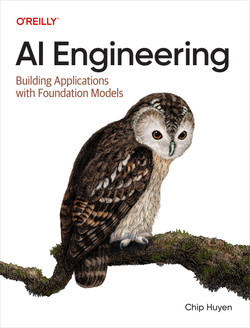Insights from AI Engineering: Building Applications with Foundation Models
A few years ago, I found myself increasingly drawn into the world of AI engineering, especially with the rise of foundation models like GPT, BERT, and Stable Diffusion. These models were no longer just research curiosities they were powering real-world applications at an unprecedented scale. When I came across AI Engineering: Building Applications with Foundation Models by Chip Huyen, I knew it was a must-read.
The book provides a structured, practical guide to building AI applications using foundation models. It’s not about developing new AI models from scratch but about leveraging existing ones effectively. Whether you’re an engineer, a product manager, or a technical leader, the book offers insights into planning, deploying, and maintaining AI systems in production.

Summary
Chapter 1: Introduction to Building AI Applications with Foundation Models
This chapter sets the stage by defining AI engineering and differentiating it from traditional ML and software engineering. It highlights the shift from model development to application development and introduces key AI engineering challenges.
Chapter 2: Understanding Foundation Models
Huyen explores the architecture and training of foundation models, emphasizing the importance of training data, model alignment, and inference strategies. The discussion on sampling strategies was particularly enlightening, as it explains why models sometimes produce inconsistent responses.
Chapter 3: Evaluating Foundation Models
Evaluation remains one of the biggest challenges in AI engineering. This chapter discusses different evaluation techniques, including benchmark tests and real-world validation, and how to build a systematic evaluation pipeline.
Chapter 4: Comparative Evaluation
Beyond traditional evaluation, comparative methods help assess different models for a given application. This chapter delves into human feedback loops and automated scoring techniques.
Chapter 5: Prompt Engineering
One of the most practical chapters, this section delves into prompt engineering an increasingly important skill in AI development. Huyen discusses best practices for structuring prompts to get the best results from foundation models. She also explores defensive prompt engineering techniques to guard against adversarial inputs.
Chapter 6: Retrieval-Augmented Generation (RAG) and Agents
For applications that need real-time or domain-specific knowledge, retrieval-augmented generation (RAG) is a game-changer. Huyen explains how combining retrieval mechanisms with generative models improves accuracy and reliability. The chapter also covers AI agents and their capabilities, including planning, tool usage, and memory handling.
Chapter 7: Fine-Tuning Foundation Models
Fine-tuning allows developers to adapt models to specific tasks. This chapter explains various fine-tuning methods, including LoRA and PEFT, and compares fine-tuning with prompt-based adaptation techniques.
Chapter 8: Data for AI Applications
High-quality data is essential for effective AI applications. Huyen covers data acquisition, labeling, augmentation, and quality control. The discussion on synthetic data and its potential applications was particularly intriguing.
Chapter 9: Inference Optimization
Deploying AI models at scale requires careful optimization to balance cost, latency, and performance. Huyen details various techniques such as quantization, pruning, and model distillation. A particularly useful insight is how AI accelerators, such as GPUs and TPUs, impact inference efficiency.
Chapter 10: End-to-End AI Application Development
The final chapter brings everything together by walking through an AI application development process, including design considerations, user feedback collection, and iterative improvements.
Chapter summaries by the Author
Key Takeaways
Key Takeaway 1: AI Engineering is About System Integration, Not Just Model Development
-
Explanation: Many engineers assume that AI development is about training models from scratch. In reality, the key challenge is integrating existing models into robust, scalable applications.
-
Personal Reflection: This insight is critical for organizations transitioning into AI-powered systems. Instead of focusing on training models, companies should invest in infrastructure, APIs, and deployment pipelines.
-
Quote: “AI engineering is just software engineering with AI models thrown in the stack.”
Key Takeaway 2: Prompt Engineering is a Skill Worth Mastering
-
Explanation: Effective prompt engineering can dramatically improve the quality of AI outputs without modifying the model itself.
-
Personal Reflection: This takeaway highlights the growing importance of designing optimal interactions between humans and AI. As a Platform engineer, I see parallels with infrastructure-as-code principles both require careful input design to ensure reliable outputs.
-
Quote: “The right instructions can get a model to perform the task you want, in the format of your choice.”
Key Takeaway 3: AI Applications Require Continuous Monitoring and Feedback Loops
-
Explanation: AI systems are never truly “finished.” They require ongoing evaluation, user feedback, and iterative improvements to remain effective.
-
Personal Reflection: This resonates with the challenges of maintaining large-scale software systems. AI applications need observability, just like any production service.
-
Quote: “Without a way to quality control AI outputs, the risk of AI might outweigh its benefits for many applications.”
Personal Reflections
One of the biggest takeaways from AI Engineering is the shift in mindset it encourages. Rather than treating AI models as black boxes, Huyen provides a framework for understanding their inner workings and how they can be optimized for real-world use. The book has also reinforced my belief that AI engineering is fundamentally about system design, user experience, and continuous iteration similar to DevOps and platform engineering.
Conclusion
AI Engineering: Building Applications with Foundation Models is an essential read for anyone looking to build AI-powered products. It balances technical depth with practical advice, making it suitable for both engineers and decision-makers. If you’re working with AI in any capacity, this book will help you navigate the challenges of deploying foundation models effectively. Highly recommended!